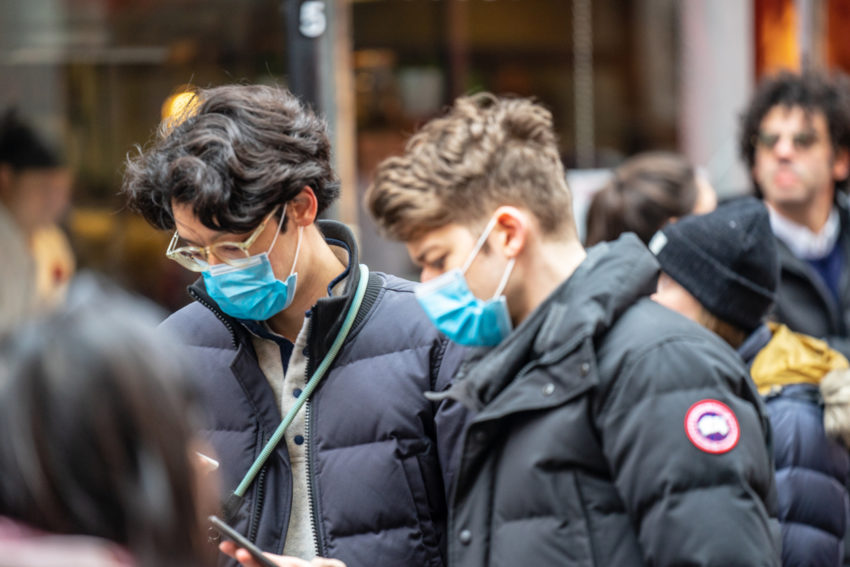
Share On Social!
Updated 7/15/21
For more than a year, the COVID-19 pandemic has afflicted many.
In the U.S., certain local, state governments declared lock-downs and stay-in-place quarantines — efforts geared at limiting the spread of the novel COVID-19. Then lock-downs reopened, then locked down again as cases rose.
Across the world, cases and deaths continue, as does public health responses, including vaccines. Governments, businesses, and people continue to grapple with the coronavirus pandemic.
Latinos are experiencing worsening health inequities, disparities in exposure, testing, prevention and treatment, and job impact. Latinos are experiencing disproportionately more cases and deaths, too.
As equitable vaccine distribution becomes the focus, Latinos aren’t getting enough access.
MORE: THE LATEST ON CORONAVIRUS AND LATINOs!
Original post published 3/5/20:
Late last year, a new virus began spreading throughout China — this illness, now known as COVID-19 (often called coronavirus), has spread throughout the world.
It is present on almost every continent, and the number of afflicted continues to rise, including Latinos and Hispanics. Still, while medical experts say the current coronavirus is a serious concern, they also note that it is something that can and will be managed with direct intervention.
“This epidemic can be pushed back but only with a coordinated and comprehensive approach that engages the entire machinery of government,” The World Health Organization (WHO) Director-General Tedros Adhanom Ghebreyesus said in a recent press conference. “We’re calling on every country to act with speed, scale, and clear-minded determination.”
Here is everything you need to know.
What is Coronavirus and COVD-19?
COVID-19 actually stems from a class of viruses known as coronaviruses.
These pathogens can infect humans in numerous ways — from causing the common cold to creating a host of respiratory issues.
Other diseases, such as MERS and SARS, are also a part of the coronavirus family. Moreover, they are passed between species. 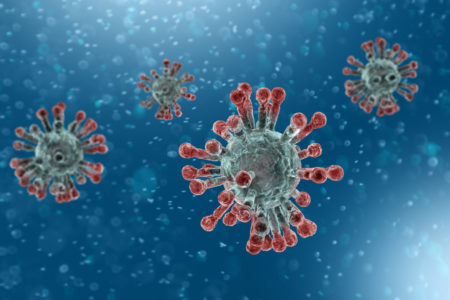
“Coronaviruses are zoonotic, meaning they are transmitted between animals and people,” WHO states. “Detailed investigations found that SARS-CoV was transmitted from civet cats to humans and MERS-CoV from dromedary camels to humans. Several known coronaviruses are circulating in animals that have not yet infected humans.
As of July 15, 2021, the total number of confirmed cases worldwide has reached 188 million with 33.9 million of those cases in the U.S., according to Johns Hopkins University’s Center for Systems Science and Engineering.
How Can I Stay Safe amid Coronavirus?
Health officials are urging people to practice numerous safe, healthy habits to prevent the spread of COVID-19.
“Standard recommendations to prevent infection spread include regular hand washing, covering mouth and nose when coughing and sneezing, thoroughly cooking meat and eggs,” WHO states. “Avoid close contact with anyone showing symptoms of respiratory illness such as coughing and sneezing.
Moreover, the CDC recently published a guide that contains numerous resources on how individuals can take action in preventing COVID-19 spread in communities. Physical distancing six feet away from other people is recommended, as is wearing a face covering and regular hand washing.
Find out how to protect your lungs.
How Did the New Strain of Coronavirus All Start?
In December 2019, reports of a new virus began spreading throughout the globe.
In the following weeks, investigators discovered the illness likely started at a Chinese market, which was selling wild animals.
As the disease continued to spread, countries began shutting down airports, closing schools, restricting travel, and declaring states of emergency.
In recent months, global health officials have been working with various governments to work toward containing the disease.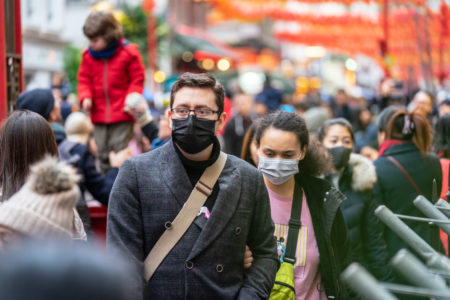
What Are Latest Stats on Coronavirus?
The current data, according to Johns Hopkins University’s Center for Systems Science and Engineering:
Updated 7/15/21
- Total confirmed cases worldwide: 188,641,552
- Total confirmed cases in the US: 33,956,098
- Total deaths in the US: 608,184
The disease is disproportionately afflicting Latinos in terms of case and death rates.
Who Is Most at Risk of Coronavirus?
The elderly, those with weak immune systems, and individuals who are already sick face the most significant risk.
In contrast, those under the age of 70 have a greater potential to recover from the illness.
Children’s immune systems can fight against the disease well, also.
“Common signs of infection include respiratory symptoms, fever, cough, shortness of breath, and breathing difficulties,” WHO states. “In more severe cases, infection can cause pneumonia, severe acute respiratory syndrome, kidney failure, and even death.”
People with cancer and heart disease should know their risk. Obesity and diabetes are also factors.
How Is Coronavirus Impacting Inequities Facing Latino and Other Minorities?
Research show that communities of color, including Latinos, face a rampant and widespread lack of access to quality healthcare.
In this state of emergency that the U.S. faces with the outbreak of the current novel coronavirus, COVID-19, those disadvantages are worse than ever.
That includes poverty and access to jobs, housing, healthy food, and more.
Disadvantaged groups currently, and will continue to, experience burdens in receiving, affording, and managing medical treatment as the virus continues to spread.
“Crises such as H1N1 and COVID-19 provide a mirror for our society and the actions we take — or fail to take,” writes Dr. Richard E. Besser, head of the Robert Wood Johnson Foundation, in the Washington Post. “Today, the United States in that mirror is one in which the risk of exposure and the ability to protect oneself and one’s family depends on income, access to health care, and immigration status, among other factors.”
Read more about inequities amid coronavirus.
Who is Trying to Address Coronavirus Among Latino Populations?
Numerous civic leaders are attempting to bridge an information gap to the Latino community — specifically, states with high Latino populations, such as Florida.
“When it comes to matters of public health, it’s paramount that we reach all members of our community — and that includes our Spanish-speaking residents,” Tampa Mayor Jane Castor told Florida Politics. “Tampa is such a diverse city, which is why it is critical that we communicate through bilingual messaging so that everyone has access to the information that they need to stay safe and stay informed.”
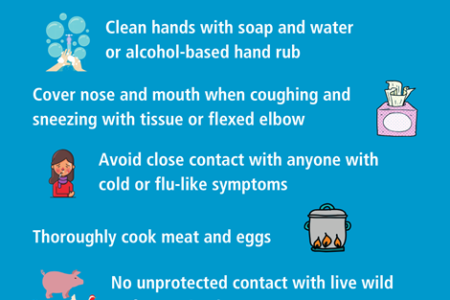 The team at Salud America! put together a resource page on how coronavirus impacts Latinos and health equity.
The team at Salud America! put together a resource page on how coronavirus impacts Latinos and health equity.
We also published some Spanish-language resources. Salud Heroes are also stepping up, like Erine Gray in starting findhelp.org, Jason Rosenfeld in communicating about the disease, San Antonio in reaching traumatized kids, Jordana Barton in closing the digital divide, Maria Pia Sanchez in making masks, and many more.
Here are 19 ways to focus on health equity. Here are 10 steps for more equitable mental health care.
How Is Coronavirus Related to Immigration Issues?
For undocumented individuals, government officials and healthcare leaders are calling for an expansion of healthcare access and information.
“It’s important for undocumented people to feel like they deserve access to these services, especially if it comes to an outbreak,” Ismael Castro, a project manager at Building Healthy Communities in the Boyle Heights neighborhood of Los Angeles, told NBC News.
However, the Trump administration is focusing its immigration efforts in another direction.
Ken Cuccinelli, acting deputy secretary of homeland security and a member of President Donald Trump’s coronavirus task force, said border security issues could worsen the pandemic.
“When you are talking about a pandemic, and you have a border crisis … we do not have facilities that can quarantine tens, scores, hundreds, or thousands of people,” Cuccinelli said, according to The Daily Signal.
Immigrants, already facing a controversial new public charge rule, could face a more complex situation due to coronavirus. DACA is is impacted.
“As the disease spreads around the continent, journalists and activists worry it could spell disaster for migrants waiting for immigration court hearings near the U.S.-Mexico border,” according to Latino USA.
Latinos also are getting left out of coroanvirus stimulus relief.
How Is Coronavirus Related to Smoking?
COVID-19 brings about a host of respiratory issues.
That is important for people who smoke and vape, which compromises lung health. Researchers say it’s too early to know for sure if smokers are more susceptible, but it’s possible.
“We know that exposure to tobacco and tobacco products impairs our body’s ability to fight off infection,” Russel Buhr, a pulmonologist at UCLA Health, told Vice. “We want people to take [coronavirus prevention] seriously. So, people should really be listening to their doctors.”
That’s not to mention the impact on secondhand and third-hand smoke and virus transmission to non-smokers.
Read more about the smoking-coronavirus connection and the impact on multifamily dwellings.
How Can You Get Truth About Coronavirus?
The best way to stay up to date about the illness is by keeping up with the latest news out of the CDC.
They have a helpful “situation summary” web page and information in Spanish.
You can follow the CDC on social platforms like Facebook and Twitter.
Other ways include reading reports from reliable news sources, such as Salud America! and other health organizations.
“Everyone can do their part to help us respond to this emerging public health threat,” according to the CDC. “It’s currently flu and respiratory disease season and CDC recommends getting a flu vaccine, taking everyday preventive actions to help stop the spread of germs, and taking flu antivirals if prescribed.”
What’s the Latest in COVID-19 Vaccine Development?
In December 2020, FDA approved multiple COVID-19 vaccines. They are now authorized for emergency use and are being distributed.
But questions remain.
Several new studies show that older Americans, especially Latino and Black adults, are skeptical of the safety and efficacy of a COVID-19 vaccine. The results indicate mistrust between communities of color and public health officials, likely due to historical racism in health care and implicit bias.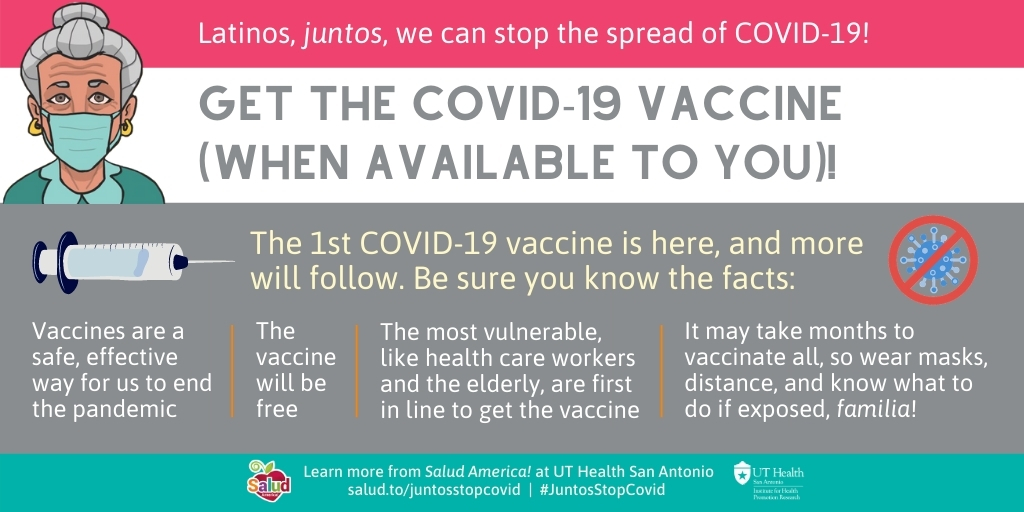
Latinos are already falling behind in vaccination rates.
This mistrust concerns health care officials, as a vaccine is key to controlling the pandemic.
“Effective vaccines will be crucial to getting this pandemic under control and preventing serious illness and death from COVID-19, especially among people over 50 and those with underlying health issues,” said Dr. Preeti Malani, the poll’s director and a specialist in geriatrics and infectious diseases at Michigan Medicine, according to MarketWatch.
As drugmakers continue to develop and implement vaccines, public health officials must work to restore trust with Latino and Black communities.
See how public health officials are working to build vaccine trust.
What Can You Do to Slow the Spread of COVID-19?
Our communities need to be safe. It depends on all of us.
That’s why Salud America! at UT Health San Antonio launched the “Juntos, We Can Stop COVID-19” digital communication campaign in English and Spanish to help Latino families and workers take action to slow the spread of coronavirus.
The #JuntosStopCovid campaign features bilingual and culturally relevant fact sheets, infographics, and video role model stories to encourage Latinos to change their public health behaviors.
Share the campaign with your friends, family, and colleagues!
What Can You Do to Promote Healthy Environments Where You Live?
Get a “Health Equity Report Card” for Your Area!
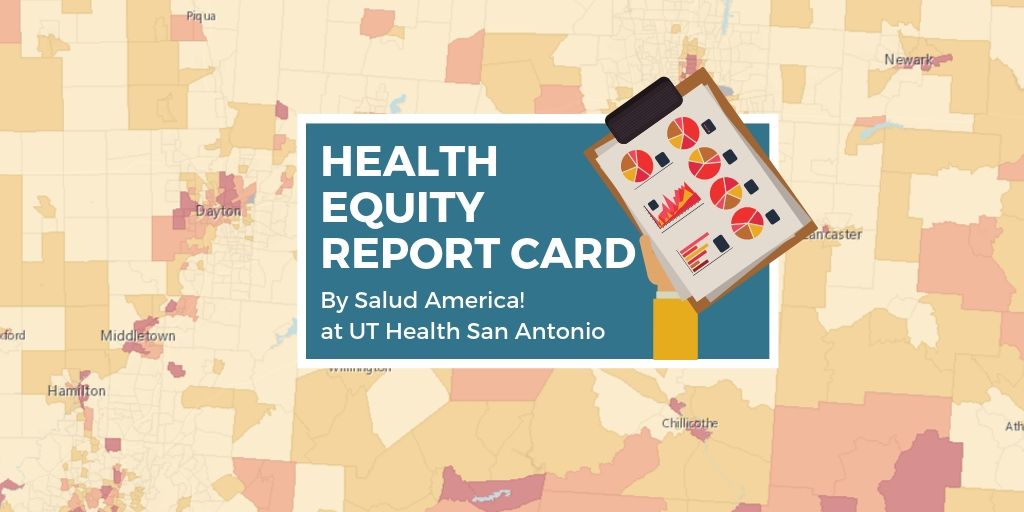 Select your county name and get a customized Health Equity Report Card by Salud America! at UT Health San Antonio. You will see how your area stacks up in housing, transit, poverty, health care, healthy food, and other health equity issues compared to the rest of your state and nation.
Select your county name and get a customized Health Equity Report Card by Salud America! at UT Health San Antonio. You will see how your area stacks up in housing, transit, poverty, health care, healthy food, and other health equity issues compared to the rest of your state and nation.
You can email your Health Equity Report Card, share it on social media, and use it to make the case for community change to boost health equity.
By The Numbers
1
Quick Survey
Can help you find out how chemically sensitive you are



